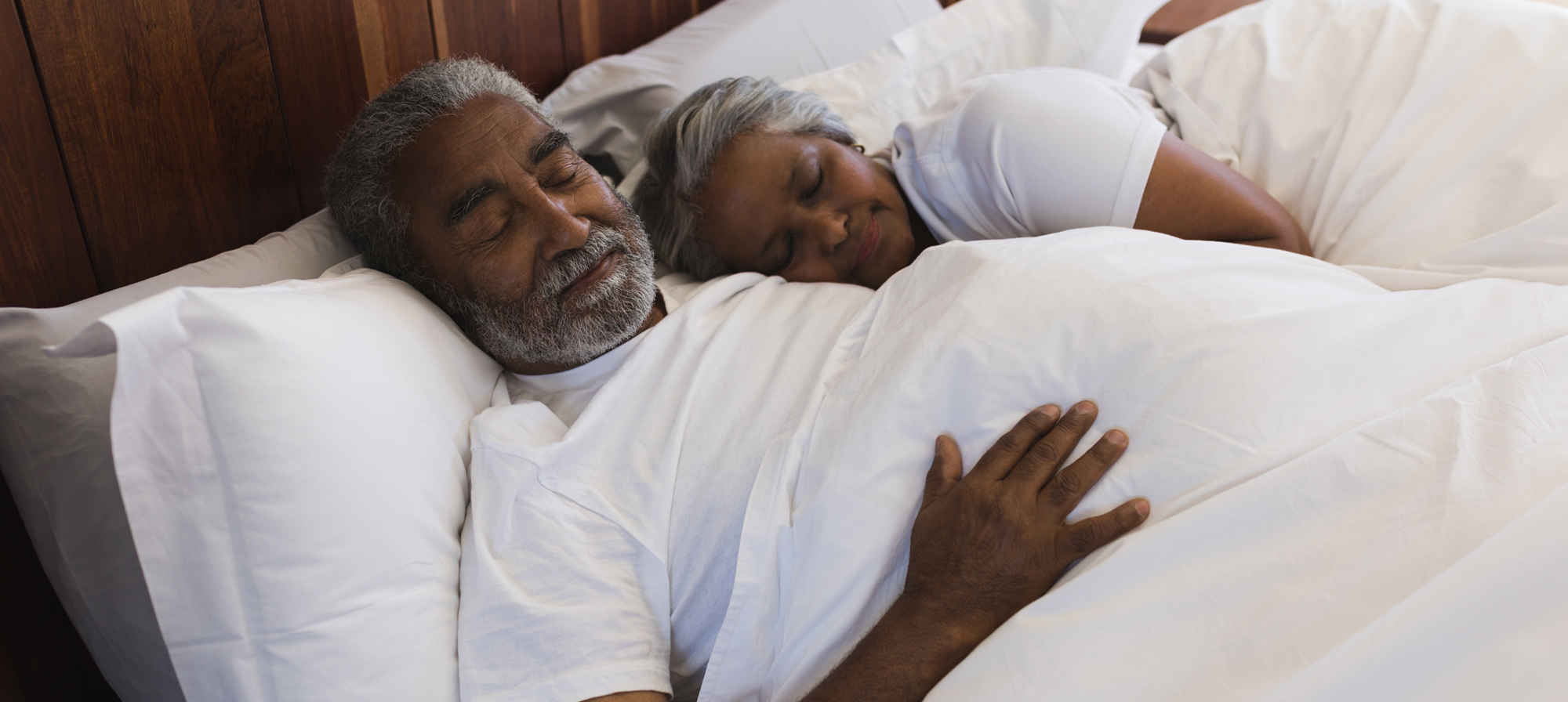Make your bed a refuge of rest, not a source of stress.
Lying in bed trying to force yourself to sleep often leads to stress and frustration. Start to strengthen the cues between your bed and sleep. Stimulus control can help.
What do you do in bed at night when you can’t sleep? Do you lie there and try to sleep? Do you watch TV? Do you read emails or browse online? Do you start snacking in bed?
These activities won’t help you get to sleep. They likely will only lead to frustration and stress. Over time, you may start to associate your bed with these thoughts and feelings. Meanwhile, doing other activities in bed when you can’t sleep—like scrolling through social media feeds or watching TV—may lead you to associate your bed with being awake and alert.
How can I combat sleeplessness?
The good news is that you can start to strengthen the cues between your bed and sleep. And you can weaken the cues between your bed and wakefulness. The key is to use a process called stimulus control.
Stimulus control can help your body relearn sleep cues. It sets limits on how much time you can spend in bed awake. And it limits the types of activities you can do in your bed and bedroom. These limits allow your body to start to re-associate your bed and bedroom with sleep. Studies have found that it’s an effective way to improve sleep quality and sleep duration.
How does stimulus control work?
Stimulus control involves setting 4 simple rules for yourself that center around your sleep behavior:
- Use your bed for sleep and sex only.
- Limit your time in bed before sleep or after waking to 30 minutes or less.
- Go to bed only when you feel sleepy.
- Whenever you can’t sleep, get out of bed, and go to a different room. Try reading a book in a dimly lit room on a comfy chair. Return to the bedroom when you’re ready to try sleeping. Repeat as needed.
Will stimulus control help me sleep better?
In the beginning, you may be up and down several times a night before you can fall asleep easily. And you may not get as much sleep as you’re used to. So, you’ll likely be sleepier than usual. This is a normal part of the process. That sleepiness will actually make it easier to fall asleep when you lie down in bed.
Aim to go to bed only when you are sleepy. You may be tired but not sleepy. Sleepiness is the feeling you have when dozing off while watching TV. Try to wait until you feel some sleepiness before heading for bed to give stimulus control the best chance to work.
As you have more experiences of falling asleep easily in bed, the new conditioning will get stronger. Over several days or weeks, your body will start to associate your bed and bedroom with sleep. This means you’ll be up and down less often during the night. And you’ll start getting more sleep overall.
Learn about 2 surprising life skills can calm an agitated mind and help you get to sleep.
Not a Silver&Fit® member? Learn more about everything the program has to offer, including more helpful healthy living tips like this, here on our website.
This information is not intended to take the place of regular medical care or advice. Please check with your doctor before using this information or beginning any self-care program. Images used for this article do not depict any members of the Silver&Fit program.
References
Murawski, B., Wade, L., Plotnikoff, R. C., Lubans, D. R., & Duncan, M. J. (2018). A systematic review and meta-analysis of cognitive and behavioral interventions to improve sleep health in adults without sleep disorders. Sleep Medicine Reviews, 40, 160-169. https://pubmed.ncbi.nlm.nih.gov/29397329/
Newsom, R. (2024. May 27). Cognitive behavioral therapy for insomnia (CBT-I). https://www.sleepfoundation.org/insomnia/treatment/cognitive-behavioral-therapy-insomnia
Perlis, M. L., Aloia, M., & Kuhn, B. (2010). Behavioral treatments for sleep disorders: A comprehensive primer of behavioral sleep medicine interventions. London, UK: Academic Press.
Perlis, M. L., Jungquist, C., Smith, M. T., & Posner, D. (2008). Cognitive behavioral treatment of insomnia: A session by session guide. New York, NY: Springer.
Stanford Health Care. (n.d.). Cognitive behavioral therapy for insomnia (CBTI): Stimulus control. https://stanfordhealthcare.org/medical-treatments/c/cognitive-behavioral-therapy-insomnia/procedures/stimulus-control.html
This article was written by Nora Byrne, edited by Sharon Odegaard, and clinically reviewed by Jossue Ortiz, DC, on March 10, 2021. Last clinical review was on November 4, 2024, by Elizabeth Thompson, MPH, RD.





